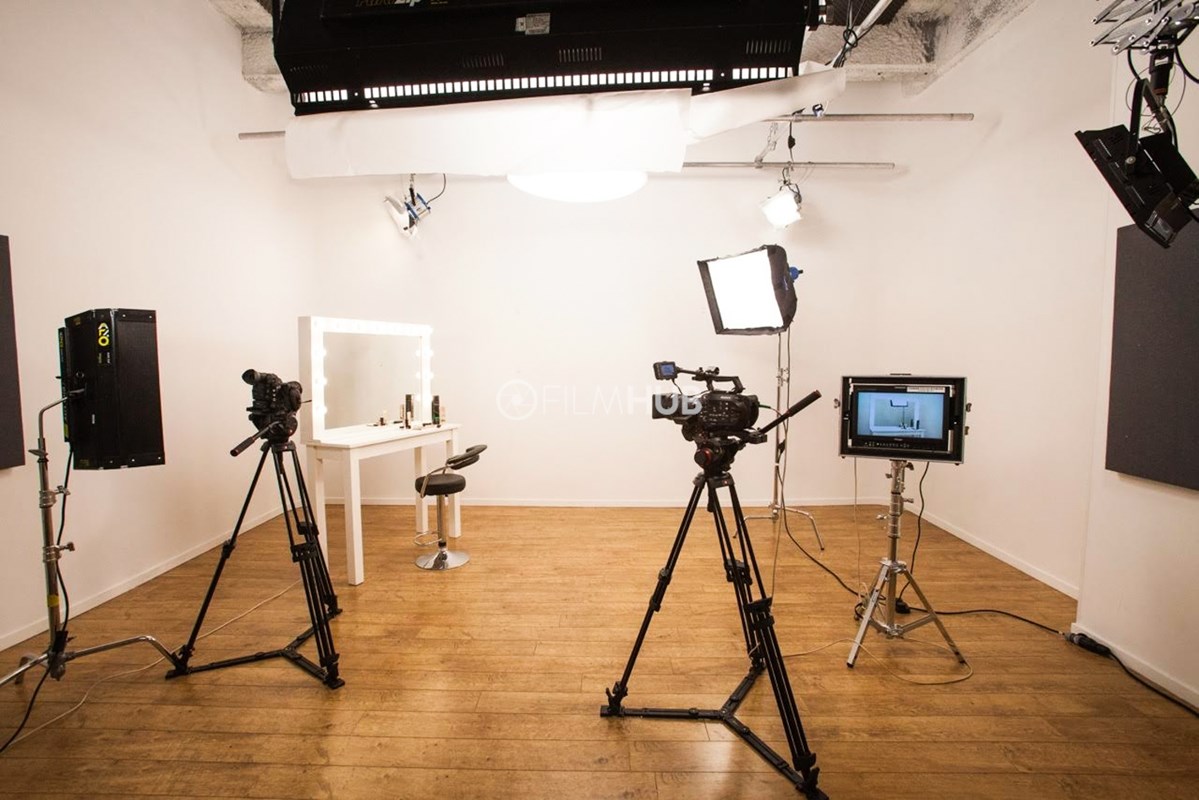The movie-making process can take up to eight years – surprising, right? The actual filming lasts just ten to twelve weeks, but the journey from script to screen demands incredible patience and attention to detail.
The numbers behind major films will blow your mind. Movie budgets can soar to a hundred million dollars. Post-production takes six months of intense work that includes editing, sound design, and visual effects. Modern filmmaking combines artistry with advanced technology. Film crews use clever techniques like scaled models and scientific approaches to tell their stories.
This piece will help you find the hidden world of movie production. You’ll see what goes into script selection, pre-production planning, and the inner workings of marketing and distribution. Let’s take a peek behind Hollywood’s doors and see how your favorite films come to life.
The Birth of a Movie Idea
The Writer’s Guild of America registers about 50,000 screenplays each year. Yet only 150 movies reach theaters annually. This gives unproduced screenplays a tiny 0.3% chance of becoming feature films.
How scripts get selected
Looking for great scripts among thousands feels like searching through a never-ending bookstore where every book looks similar. The Black List emerged to highlight outstanding unproduced screenplays. The results speak for themselves – more than 40% of scripts from their first list became feature films.
Screenwriters need a “bullet-proof” screenplay to catch Hollywood’s eye. The script must show a high level of craft that comes from years of writing. Producers get dozens of submissions every week. Scripts that fail to grab attention in the first ten pages end up in the trash.
Role of movie executives
Executive producers drive films from concept to screen. They oversee other producers and keep projects within budget while maintaining artistic standards. These professionals work on their own or represent studios, financiers, or distributors.
Their responsibilities cover:
- Securing project financing
- Building the core team
- Attaching major stars
- Overseeing negotiations
- Managing the overall production timeline
Big studio CEOs might serve as executive producers on major productions. Independent films might see creators or screenwriters take this role. These producers shape script development, handle finances, and guide creative decisions throughout production.
Budget considerations
Budgeting stands as a vital part of movie making. Investors want production costs to line up with original estimates. A detailed budget accounts for many elements.
Producers study scripts to set shooting schedules and daily page counts. They figure out each actor’s required days on set and their pay. Scene breakdowns help estimate costs for stunts and special effects, including crew, rental, and insurance.
Smart budgeting matters for many reasons. It helps allocate resources properly – from actor fees to crew salaries, production costs, and equipment rentals. A solid financial plan helps the creative team understand their boundaries.
Producers own the development stage. They collect ideas until the final screenplay takes shape. They create synopses to pitch the idea and raise money. Many travel to festivals at home and abroad to present their projects to investors. With enough funding secured, pre-production begins – casting, crew selection, and location scouting follow.
Pre-Production Planning
The film’s vision starts taking shape after securing funding. Pre-production is a vital phase that needs careful planning. You need to find perfect locations and put together an expert crew.
Location scouting process
A thorough script breakdown helps identify all settings needed for filming. Professional scouts look extensively for interior and exterior venues that match the screenplay’s needs. Scouts must review six key factors before finalizing any location:
- Esthetic appeal matching the director’s vision
- Distance from the main film office
- Property ownership and permission requirements
- Budget constraints and potential fees
- Logistical considerations like parking and power sources
- Environmental factors such as natural light and ambient sound
Scouts visit potential sites at the exact time when filming would happen to check lighting conditions properly. A technical scout happens shortly before shooting begins to focus on implementation details.
Hiring key crew members
Building a skilled crew begins with creating the core pre-production team. The team consists of:
- Line producer
- Unit production manager
- Production coordinator
- Production accountant
Department heads join the team based on their expertise and experience levels after this setup. These key positions include:
- Director of photography
- Production designer
- Costume designer
- Sound designer
- Art director
Department heads help build their teams with trusted professionals. This structure helps departments keep good working relationships throughout production.
The project needs people whose skills match its specific requirements. Filmmaker Liz W. Garcia points out, “Great directors hire great crew. Great directors know that it isn’t their job to know everyone else’s job better than they do”.
The production coordinator keeps communication flowing between departments. They handle paperwork and make sure everyone works together smoothly toward shared goals. The unit production manager takes care of all cost-related decisions and serves as the chief administrator for crew positions.
The line producer works with the director to accomplish getting the project on screen on time and under budget during pre-production. They review potential crew members’ previous work to ensure their creative approach fits the film’s vision.
Departments continue adding crew members as pre-production moves forward. This creates a small army of skilled professionals. The phase also includes securing union agreements and contracts, especially when you have union members.
Life on a Movie Set
A Hollywood film set runs like a freight train at full steam, with crew members carefully laying tracks and clearing paths as they move forward. This high-stakes environment just needs complete focus, because a single distraction could change someone’s career path forever.
Daily filming schedule
Production schedules typically run Monday through Friday, starting before dawn and often lasting into Saturday morning. Film crews work at least 13 hours daily, though actual workdays stretch to 15 hours with wrap time. Of course, night shoots bring their own challenges, from extreme weather to sleep deprivation.
The workload never lets up – crews face 12-18 hour days that sometimes run seven days a week. Safety regulations require emergency vehicles to have clear access throughout filming.
Managing hundreds of crew
Unit production managers run daily operations by handling budgets, hiring, and logistics. First assistant directors create shooting schedules with department heads to keep everyone on track. Second assistant directors act as backstage managers and coordinate with actors through makeup and wardrobe.
Production coordinators keep communication flowing between departments, handle paperwork, and manage production assistants. Transportation coordinators get and oversee all vehicles, from equipment trucks to talent trailers.
Problem solving on set
Movie sets face unexpected challenges – equipment might fail or sudden weather changes could affect exterior shots. Production teams must be ready to change plans quickly. Scenes with multiple actors take extra time to position and cover properly. Even trained animals need more patience than human actors to hit their marks.
Working with movie stars
Principal cast members need specific protocols on set. Their concentration must stay undisturbed, especially during emotional scenes. Celebrities usually go by first names like everyone else, but keeping professional boundaries is vital.
The golden rule with stars: no unauthorized photos. Taking pictures could lead to serious trouble, from getting warned to losing your job. Stars have a steadfast dedication to their craft – the best approach helps them work well while keeping respectful distance.
Film sets blend artistic vision with technical precision in an environment where hundreds of professionals must work in perfect sync. Though the work is intense, most crew members wouldn’t want any other career. Clear planning, good communication, and deep commitment help these teams turn creative ideas into cinema reality.
Inside the Editing Room
The editing room creates cinematic magic. Raw footage becomes a compelling story here. Film editors spend countless hours selecting shots and crafting performances that fascinate audiences.
Choosing the best shots
Film editors start by carefully logging footage arriving from the set. They shape narratives by picking moments that serve the story best. Their careful selection boosts performances and adjusts comedic timing. Sometimes they even rewrite dialog to make scenes flow better.
Editors need more than mechanical skills. They must work creatively with story, dialog, music, and pacing. These elements help them change a scene’s tone or draw attention away from continuity errors.
Rough cuts emerge soon after filming ends. This original version usually has temporary visual effects. Placeholder text describes upcoming action sequences. Directors and editors then work together. They refine the film through multiple versions based on test audience feedback.
Adding special effects
Modern filmmaking relies heavily on visual effects. Directors can now challenge creative limits beyond physical constraints. Success requires careful planning before filming begins. In stark comparison to this, the phrase “we’ll fix it in post” misses the point about thorough preparation.
Special effects teams typically include:
- Special Effects Supervisors who oversee effect sequences
- Visual Effects Artists specializing in CGI
- Practical Effects Artists creating physical props
- Model Makers crafting miniatures
- Animatronics Engineers developing mechanical creatures
Directors, cinematographers, and effects teams must work closely together. Directors share their creative vision. Cinematographers capture scenes perfectly for effects work. Effects artists blend everything smoothly with live footage.
Adobe Premiere Pro and After Effects have opened new editing possibilities. Digital rotoscoping lets editors overlay motion-filled images without green screens. Color grading makes the film’s visual impact stronger by adjusting tones that set mood and atmosphere.
Post-production usually takes six intensive months. Editors keep clear communication with composers, sound designers, and visual effects artists during this time. This shared approach makes sure everything lines up perfectly in the final cut. The result gives viewers an experience that holds their attention from beginning to end.
Marketing and Distribution Secrets
A carefully arranged marketing campaign and distribution strategy powers every successful film. Studios use sophisticated methods to maximize their returns through test screenings and streaming deals.
Test audience reactions
Test screenings provide vital feedback, with 90% of wide-release studio films going through multiple audience previews. Studios typically conduct three test screenings, though some films need up to 15 sessions. These previews help studios understand audience responses and make improvements.
Professional screening companies choose viewers based on specific demographics instead of random street recruitment. Viewers complete detailed questionnaires and join focus group discussions after watching the film. Their input can lead to substantial changes – from small edits to completely new endings.
To cite an instance, audience reactions have shaped many successful films. Viewers disliked the original score during Troy screenings, which led to its replacement. The Bourne Supremacy needed a $200,000 ending reshoot just two weeks before release because test audiences suggested better alternatives.
Theater release strategy
Box office potential drives careful theatrical release planning. Recent data shows 35% of viewers want blockbusters and franchise films to debut exclusively in theaters, followed by streaming after 45 days. So many studios now use this hybrid approach.
Marketing campaigns gain momentum as theatrical release approaches. Key promotional elements include:
- Strategic trailer placement
- Social media outreach
- Press junkets with cast interviews
- Mutually beneficial alliances and merchandise tie-ins
- Targeted advertising on platforms of all types
Streaming platform deals
Streaming has revolutionized film distribution. Studios negotiate complex deals with multiple platforms, which often creates bidding wars for exclusive rights. Streaming services compete aggressively to secure popular titles.
Major studios follow different streaming strategies. Disney+ releases films three months after theatrical premiere, while Warner Bros. brings content to Max within 45 days. Paramount+ stays flexible by releasing some titles alongside transactional platforms while giving others longer theatrical runs.
Streaming deals have varied financial structures. Platforms might offer upfront payments, share revenue based on viewing metrics, or combine both approaches. Streaming services now invest more in original productions, which changes traditional distribution models.
Recent trends reveal 46% of viewers prefer simultaneous theater and streaming releases. This change pushes studios to create hybrid release strategies that balance theatrical revenue with streaming platform needs. Studios must time releases carefully across different platforms to avoid revenue loss between theatrical, transactional, and streaming windows.
Conclusion
Movie making is one of the most complex yet fascinating parts of entertainment. The audience sees just two hours of polished content, but the trip from concept to screen just needs years of commitment, millions of dollars, and hundreds of skilled professionals to work together perfectly.
Each stage comes with its own challenges. Finding that rare gem among thousands of script submissions is crucial. The team must plan every detail and bring together the right experts before filming starts. Production pushes people to their limits with tough schedules. The raw footage turns into cinematic magic through careful editing and effects during post-production.
Marketing and distribution methods have changed substantially over time as viewer priorities and new platforms emerge. Of course, streaming services have opened new doors while creating fresh challenges for studios that want the best returns on their investments.
These behind-the-scenes realities show why successful movies earn their praise. When hundreds of passionate professionals spend years perfecting every detail, the final product proves worth all the time and resources. Next time you watch a movie, think about the extraordinary work that brought that story to your screen.




